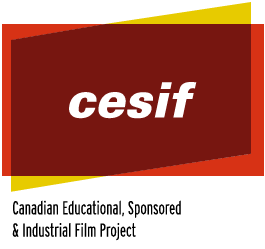Sponsors:
Producers:
Languages:
- English
- 28mm
- Silent
- Black and White
Library and Archives Canada: 28mm, 16mm.
"Film to publicize the need to raise money through the 1919 Victory Loan. It shows: men working; hospital ward with wounded soldiers; soldiers going to vocational school; various shots of different classes; shots of farms and farmers; two shots of constructed homes; shot of foodstuffs such as dairy products from Quebec; shot of steel plants and coal mines; making rails for reconstruction; fisheries; shots of fishing boats and the cutting and sorting of fish; building ships; close-up of men working on ship construction; long-shot of finished ship; map of Canada with animation of a small money bag moving to Ottawa; close-uup depicting Victory Loan 1919; map of Canada showing money bags moving back to the provinces. The film conclude with the word 'prosperity' covering the map."
"Two-reel film presented by the Dominion Publicity Committee to encourage Canadians to contribute to the 1919 Victory Loan. The first reel begins with a dramatization of a conversation between two men in an office, about why another Victory Loan is needed now that the war is over. They discuss, as indicated in the intertitles, the need for the Canadian government to raise funds to meet financial obligations such as the expense of demobilizing the troops, rehabilitation of injured soldiers and the re-establishment of veterans in civilian life, and to provide 'national working capital'. Funds raised by the Victory Loan will be used to help Canada 'maintain her newly-won export trade', one means of which is to give credit to Great Britain and other allies and credit to purchase for cash the products of every province. At the mention of these various products, the film cuts to scenes of various resource industries: the British Columbia salmon fishery (fishing boat shown); ship-building (logging operations and ship shown); Alberta beef (beef cattle shown); and the grain crop in Saskatchewan and Manitoba (grain harvesting with various kinds of machinery and visuals of grain elevators shown). Part two continues with more scenes of large grain silos at a port and large ships being loaded with the grain. The film then gives information about helping Canadian war veterans. An intertitle states that 90,000 people are getting a pension in Canada. The work in aid of veterans is illustrated by: a hospital ward with rows of bedridden Canadian soldiers; vocational retraining for soldiers, including a soldier weaving a wicker birdcage; soldiers in a classroom at a vocational training school in Ontario; other classroom scenes showing soldiers learning how to build and operate various kinds of equipment and to build a structure; loans for veterans who want to farm (illustrated by farm machinery at work and farm buildings). Other uses for the Victory Loan funds are: loans to provinces and municipalities for moderately-priced housing (shows a row of houses being built, possibly in Toronto); credits for potential buyers of Quebec dairy products (shows men making dairy products); support for the mining, coal and steel industry in Nova Scotia (shows mines, mills, a steam shovel and rolling steel rails for reconstruction); the reconstruction of buildings destroyed in the 1917 Halifax Explosion; encouragement of exports from the Prince Edward Island fishery (shows a ship with a net full of fish and a group of people at dockside cleaning fish); and the upkeep of the Canadian mercantile marine fleet in order to carry Canadian products overseas (shot of launch of a ship). An intertitle exhorts Canadians to make the Victory Loan of 1919 the crowning success of Canada's war effort. The film uses an animated map of Canada to illustrate how the money will be distributed. A money bag is situated on each province and then moves to Ottawa, where it disappears. The two men shown at the start of the film are shown discussing where the money will be spent, emphasizing that "every dollar is spent in Canada". Next is a shot of a Victory Loan document. Then the animated map shows the money bags reappearing at the spot marked Ottawa and moving back to the provinces. The film concludes with artwork showing a flag and the Prince of Wales, accompanied by the intertitle 'Let's win the Prince of Wales flag', apparently a reward for the most Victory Loan money raised."
